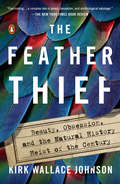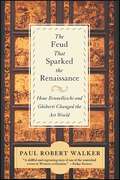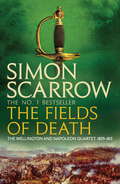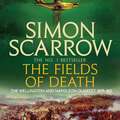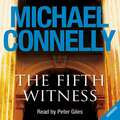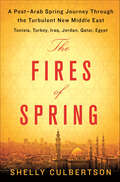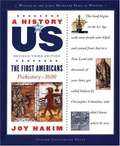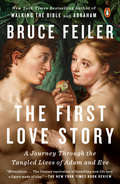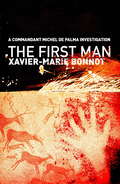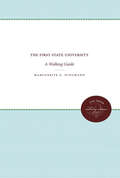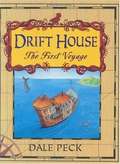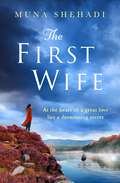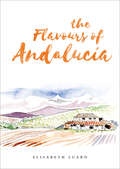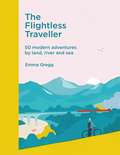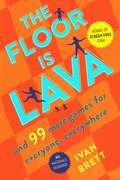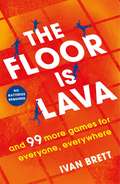- Table View
- List View
The Feather Thief: Beauty, Obsession, and the Natural History Heist of the Century
by Kirk Wallace Johnson“One of the most peculiar and memorable true-crime books ever.” —Christian Science Monitor“Fascinating from the first page to the last—you won’t be able to put it down.” —Southern LivingA rollicking true-crime adventure and a thought-provoking exploration of the human drive to possess natural beauty for readers of The Stranger in the Woods, The Lost City of Z, and The Orchid Thief.On a cool June evening in 2009, after performing a concert at London's Royal Academy of Music, twenty-year-old American flautist Edwin Rist boarded a train for a suburban outpost of the British Museum of Natural History. Home to one of the largest ornithological collections in the world, the Tring museum was full of rare bird specimens whose gorgeous feathers were worth staggering amounts of money to the men who shared Edwin's obsession: the Victorian art of salmon fly-tying. Once inside the museum, the champion fly-tier grabbed hundreds of bird skins—some collected 150 years earlier by a contemporary of Darwin's, Alfred Russel Wallace, who'd risked everything to gather them—and escaped into the darkness.Two years later, Kirk Wallace Johnson was waist high in a river in northern New Mexico when his fly-fishing guide told him about the heist. He was soon consumed by the strange case of the feather thief. What would possess a person to steal dead birds? Had Edwin paid the price for his crime? What became of the missing skins? In his search for answers, Johnson was catapulted into a years-long, worldwide investigation. The gripping story of a bizarre and shocking crime, and one man's relentless pursuit of justice, The Feather Thief is also a fascinating exploration of obsession, and man's destructive instinct to harvest the beauty of nature.
The Feud That Sparked the Renaissance: How Brunelleschi and Ghiberti Changed the Art World
by Paul Robert Walker“Walker here pairs off proto-architect Filippo Brunelleschi and doormaker Lorenzo Ghiberti in an often engaging version of Quattrocento Smackdown.” —Library JournalJoining the bestsellers Longitude and Galileo’s Daughter, this is a lively and intriguing tale of two artists whose competitive spirit brought to life one of the world’s most magnificent structures and ignited the Renaissance.The dome of the Santa Maria del Fiore, the great cathedral of Florence, is among the most enduring symbols of the Renaissance, an equal to the works of Leonardo and Michelangelo. Its designer was Filippo Brunelleschi, a temperamental architect and inventor who rediscovered the techniques of mathematical perspective. Yet the completion of the dome was not Brunelleschi’s glory alone. He was forced to share the commission with his archrival, the canny and gifted sculptor Lorenzo Ghiberti.In this lush, imaginative history—a fascinating true story of artistic genius and personal triumph—Paul Robert Walker breathes life into these two talented, passionate artists and the competitive drive that united and dived them. As it illuminates fascinating individuals from Donatello and Masaccio to Cosimo de’Medici and Leon Battista Alberti, The Feud That Sparked the Renaissance offers a glorious tour of 15th-century Florence, a bustling city on the verge of greatness in a time of flourishing creativity, rivalry, and genius.“A convincing account of one of the defining moments in art and history . . . He presents the two key figures in this drama in true human proportions . . . a skillful and engrossing story.” —Kirkus Reviews“A monstrously detailed account of a fascinating period in art and architecture.” —AudioFile
The Fields of Athenry: A Journey Through Ireland
by James Charles RoyIn The Fields of Athenry, James Charles Roy leads us through the Irish past and present by way of his own personal struggles and misadventures in renovating Moyode Castle, an old tower house that he purchased more than thirty years ago. While he pieces together its four-hundred-year-old past, the castle becomes a powerful symbol for Roy - it is battered by waves of history, yet timeless and resilient. Roy’s personal struggles with the land and its people open for him a wide-ranging historical conversation on Ireland today and our sense of history more broadly. How do we reconcile the historical nostalgia attached to Ireland with the boom times that the "Celtic Tiger" enjoys today? With this question in mind, Roy searches for the answer of what attracts us - or, perhaps more aptly, him - to the rubble of a castle from Irish days long past.
The Fields of Death (The Wellington and Napoleon Quartet)
by Simon ScarrowTHE FIELDS OF DEATH is the epic final novel in Simon Scarrow's bestselling Wellington and Napoleon Quartet. Essential reading for fans of Bernard Cornwell.1809. Viscount Wellington and Emperor Napoleon Bonaparte have made their mark as military commanders. Lifelong enemies, they both believe their armies are strong enough to destroy any rival. But in war victory can never be certain.While Wellington's success continues in Spain, Napoleon feels the sting of failure. Yet despite a disastrous Russian campaign and humiliating defeat at Leipzig, he persists in fighting on.With Napoleon's power waning, the newly titled Duke of Wellington is perfectly placed to crush the tyrant. But his enemy refuses to surrender, and so the two giants must face a final reckoning on the bloody battlefield of Waterloo...
The Fields of Death: (Revolution 4) (The Wellington and Napoleon Quartet)
by Simon ScarrowTHE FIELDS OF DEATH is the epic final novel in Simon Scarrow's bestselling Wellington and Napoleon Quartet. Essential reading for fans of Bernard Cornwell.1809. Viscount Wellington and Emperor Napoleon Bonaparte have made their mark as military commanders. Lifelong enemies, they both believe their armies are strong enough to destroy any rival. But in war victory can never be certain.While Wellington's success continues in Spain, Napoleon feels the sting of failure. Yet despite a disastrous Russian campaign and humiliating defeat at Leipzig, he persists in fighting on.With Napoleon's power waning, the newly titled Duke of Wellington is perfectly placed to crush the tyrant. But his enemy refuses to surrender, and so the two giants must face a final reckoning on the bloody battlefield of Waterloo...(P)2017 Headline Digital
The Fifth Witness (Mickey Haller Series #4)
by Michael ConnellyIn tough times, crime is one of the few things that still pays, but even criminals are having to make cut-backs. So for defence lawyer Mickey Haller, most of his new business is not about keeping people out of jail; it's about keeping a roof over their heads as the foreclosure business is booming.Lisa Trammel has been a client of Mickey's for eight months, and so far he's stopped the bank from taking her house. But now the bank's CEO has been found beaten to death - and Lisa is about to be indicted for murder...Read by Peter Giles(p) 2011 Hachette Audio
The Final Call: Investigating Who Really Pays For Our Holidays
by Leo HickmanNo industry in the world employs more people or is the world's largest foreign currency earner than tourism. Long billed as the cleanest industry for developing countries to invest in, tourism seems to offer everyone involved a positive experience.This is the official line, anyway. In truth, the reality is much more complex . For The Final Call Hickman travels the world on a range of holidays and finds that behind the sunny facade of pools, smiling locals, sightseeing trips and exquisite cuisine is an ugly reality and it is spreading unchecked to all corners of the globe. But none of us are going to stop holidaying and at the heart of this is a heartfelt attempt to discover the best way to holiday wherever you are.
The Finest Nines: The Best Nine-Hole Golf Courses in North America
by Zac BlairOver the past few years, perhaps due to an increase in work and family commitments, there has been a noticeable rise in the number of golfers interested in playing nine-hole courses. Although there are close to eight thousand such courses worldwide, how do golfers determine which are the best ones to play? In The Finest Nines, golf writer and historian Anthony Pioppi highlights the twenty-five finest nine-hole courses in North America and details how to play each one. Some of the courses featured include: • Whitinsville Golf Club—Whitinsville, Massachusetts • Sweetens Cove Golf Club—South Pittsburg, Tennessee • Birchwood Country Club—Westport, Connecticut • LivingStone Golf Course—Calgary, Alberta • Aetna Springs Golf Course—Pope Valley, California • And many more! This book also includes an interview with course designer and architect Mike Nuzzo about designing a nine-hole golf course in the modern era as well as profiles of courses that have a non-traditional number of holes. The Finest Nines is the perfect gift for the avid golfer who does not have the time to play a full eighteen holes!
The Fire
by Daniela KrienIn her perceptive and affecting new novel, Daniela Krien explores a marriage where everything hangs in the balance. "Quietly devastating . . . Krien beautifully conveys [a] sense of impotent frustration, familial tensions and the thwarted desires of middle age" HANNAH BECKERMANN, ObserverHow can two lovers find a way back to each other, when the pain of the past stands between them?With plans adrift after a fire burns down their rented holiday cabin, Rahel and Peter find themselves unexpectedly on an isolated farm where Rahel spent many a happy childhood summer. Suddenly, after years of navigating careers, demanding children and the monotony of the daily routine, they find themselves unable to escape each other's company. With three weeks stretching ahead, they must come to an understanding on whether they have a future together."A stylish, subtle read" Woman & Home BOOK OF THE MONTHWhat happens when love grows older and passion has faded? When what divides us is greater than what brought us together? And how easy is it to ask the fundamental questions about our relationships? Praise for LOVE IN FIVE ACTS:"Highly recommended" The Times "Exquisite . . . Utterly captivating" Woman and Home"Unfailingly impressive" Irish Times "Beautifully direct and lucid prose" Sydney Morning Herald"A beautiful novel" New European "Sympathetic and clear-eyed" Financial Times"An intelligent study of female ambition and frailty" ObserverTranslated from the German by Jamie Bulloch
The Fires of Spring: A Post-Arab Spring Journey Through the Turbulent New Middle East—Tunisia, Turkey, Iraq, Qatar, Jordan, Egypt
by Shelly CulbertsonTurkey, Iraq, Qatar, Jordan, Egypt, and TunisiaThe “Arab Spring” all started when a young Tunisian fruit seller set himself on fire in protest of a government official confiscating his apples and slapping his face. The aftermath of that one personal protest grew to become the Middle East movement known as the Arab Spring—a wave of disparate events that included protests, revolutions, hopeful reform movements, and bloody civil wars.The Fires of Spring is the first book to bring the post-Arab Spring world to light in a holistic context. A narrative of author Shelly Culbertson’s journey through six countries of the Middle East, The Fires of Spring tells the story by weaving together a sense of place, insight about issues of our time, interviews with leaders, history, and personal stories. Culbertson navigates the nuances of street life and peers into ministries, mosques, and women’s worlds. She delves into what Arab Spring optimism was about, and at the same time sheds light on the pain and dysfunction that continues to plague parts of the region. The Fires of Spring blends reportage, travel memoir, and analysis in this complex and multifaceted portrait.
The First Americans (A History of Us #1)
by Joy HakimThousands of years-- way before Christopher Columbus set sail-- wandering tribes of hunters made their way from Asia across the Bering land bridge to North America. They didn't know it, but they had discovered a New World. The First Americans is a fascinating re-creation of pre-Columbian Native American life, and it's an adventure of a lifetime! Hunt seals with the Inuit; harvest corn on a cliff-top mesa; hunt the mighty buffalo; and set sail with Leif Erickson, Columbus, and all the early great explorers-- Cabot, Balboa, Ponce de Leon, Cortes, Henry the Navigator, and more-- in this brilliantly told story of America before it was America. [This text is listed as an example that meets Common Core Standards in English language arts in grades 4-5 at http://www.corestandards.org.]
The First Fingerprint
by Xavier-Marie BonnotIn an underwater cavern off the coast west of Marseille are the first human engravings known to man. Among them is a crude drawing of a three-fingered hand, which has long puzzled archaeologists. Is it a hunting signal? A mystic sign invoking the spirits? Or is it, as many believe, evidence of ritual mutilation in a Shamanistic world? "The Hunter" evidently believes the latter. Driven by inhuman voices to maim and kill, he severs the body parts of his victims - and signs his savagery with a print of a three-fingered hand. Commandant Michel de Palma, of the Marseille murder squad, heads to the university in Aix-en-Provence to investigate further, but the clique of pre-history professors he encounters are as hard to unravel as the meaning of the cave-drawing itself. As he gets closer to the truth, the group of academics close ranks. Slowly and alone, de Palma begins pursuing a mystery that dates back to the Ice age.The First Fingerprint introduces a policeman as polished as he is brutal, as charming as he is deceptive. Michel de Palma, called "the Baron" by his colleagues, knows the dark underside of the city of Marseille as do none of his rivals. But his enemies are everywhere: in the crime-infested sinks of the suburbs; in the sleek and squalid bars of the old quarter; even in the police ranks themselves.
The First Fingerprint
by Xavier-Marie BonnotIn an underwater cavern off the coast west of Marseille are the first human engravings known to man. Among them is a crude drawing of a three-fingered hand, which has long puzzled archaeologists. Is it a hunting signal? A mystic sign invoking the spirits? Or is it, as many believe, evidence of ritual mutilation in a Shamanistic world? "The Hunter" evidently believes the latter. Driven by inhuman voices to maim and kill, he severs the body parts of his victims - and signs his savagery with a print of a three-fingered hand. Commandant Michel de Palma, of the Marseille murder squad, heads to the university in Aix-en-Provence to investigate further, but the clique of pre-history professors he encounters are as hard to unravel as the meaning of the cave-drawing itself. As he gets closer to the truth, the group of academics close ranks. Slowly and alone, de Palma begins pursuing a mystery that dates back to the Ice age.The First Fingerprint introduces a policeman as polished as he is brutal, as charming as he is deceptive. Michel de Palma, called "the Baron" by his colleagues, knows the dark underside of the city of Marseille as do none of his rivals. But his enemies are everywhere: in the crime-infested sinks of the suburbs; in the sleek and squalid bars of the old quarter; even in the police ranks themselves.
The First Love Story: Adam, Eve, and Us
by Bruce FeilerFrom the New York Times bestselling author of Walking the Bible and Abraham comes a revelatory journey across four continents and 4,000 years exploring how Adam and Eve introduced the idea of love into the world, and how they continue to shape our deepest feelings about relationships, family, and togetherness.Since antiquity, one story has stood at the center of every conversation about men and women. One couple has been the battleground for human relationships and sexual identity. That couple is Adam and Eve. Yet instead of celebrating them, history has blamed them for bringing sin, deceit, and death into the world. In this fresh retelling of their story, New York Times columnist and PBS host Bruce Feiler travels from the Garden of Eden in Iraq to the Sistine Chapel in Rome, from John Milton’s London to Mae West’s Hollywood, discovering how Adam and Eve should be hailed as exemplars of a long-term, healthy, resilient relationship. At a time of discord and fear over the strength of our social fabric, Feiler shows how history’s first couple can again be role models for unity, forgiveness, and love. Containing all the humor, insight, and wisdom that have endeared Bruce Feiler to readers around the world, The First Love Story is an unforgettable journey that restores Adam and Eve to their rightful place as central figures in our culture's imagination and reminds us that even our most familiar stories still have the ability to surprise, inspire, and guide us today.From the Hardcover edition.
The First Man: A Commandant Michel de Palma Investigation
by Xavier-Marie BonnotCommandant Michel de Palma, known by his colleagues as 'the Baron', has chosen early retirement and plans to travel the world. But he is dragged back into the force when a case that has haunted him for a decade erupts once more. Resurfacing from Le Guen's Cave, a prehistoric grotto thirty-eight metres below sea level outside Marseilles, France, an experienced diver mysteriously gets into difficulties. Meanwhile, Thomas Autran, a serial killer with a peculiar interest in the supernatural, suffering from a dangerous form of schizophrenia, is once again on the run. Ancient cave paintings, savage murders committed according to a precise ritual: a return to the first ages of humanity, the era of the great Palaeolithic hunters. And despite the gory trail left at each crime scene, de Palma must first understand the child, the secrets of a family, a story of exploitation - and revenge - before he can track down the First Man.
The First State University: A Walking Guide
by Marguerite E. SchumannIn a convenient format, Schumann offers a guide to the campus of the University of North Carolina and immediately adjacent areas in Chapel Hill that will be indispensable for walkers wishing to acquaint themselves with the University and its history. In the revised edition, she has added two hour-long walks to the four presented in the original volume, included several sites that can be conveniently toured by car, and added thirty new buildings (for a total of ninety). She includes new structures in the historic districts of the campus as well as points of interest on South Campus, where the medical complex is located.Originally published in 1985.A UNC Press Enduring Edition -- UNC Press Enduring Editions use the latest in digital technology to make available again books from our distinguished backlist that were previously out of print. These editions are published unaltered from the original, and are presented in affordable paperback formats, bringing readers both historical and cultural value.
The First Voyage (A Drift House Voyage)
by Dale PeckSent to stay with their uncle in a ship-like home called Drift House, twelve-year-old Susan and her two younger stepbrothers embark on an unexpected adventure involving duplicitous mermaids, pirates, and an attempt to stop time forever.
The First Wife: An electric and emotional read of dramatic secrets you won't be able to put down!
by Muna ShehadiAt the heart of a great love lies a devastating secret . . . Fans of Lucinda Riley, Santa Montefiore and Louise Douglas will be gripped by Muna Shehadi's stunning new novel of twisting family secrets.'Clear your schedule and dive into Muna Shehadi's latest triumph, The First Wife! Her vivid characters walk right off the page and into your heart . . . I love this book!' VICKI LEWIS THOMPSON, New York Times bestselling authorEarly readers are captivated by The First Wife:'A fabulous read full of twists and turns . . . A great book . . . I loved it. Definitely a 5 star read''This is a great read, it was well written with a great storyline and well developed characters that I took to my heart . . . I couldn't put this book down, it was truly compelling''I was absolutely captivated by the atmosphere, and the characters . . . My advice is not to start reading this unless you have time to go to the end!'.............................................Holly Penny expects that attending the funeral of her ex-husband at the elegant mountain resort they enjoyed together so often will be momentous and emotional. Lyle was the love of her life; they were happier than she'd ever imagined being, until a split second changed their lives and eventually destroyed their marriage. Surrounded by luxury she could once take for granted, what Holly doesn't expect is to discover that Lyle kept their long, loving relationship a secret from the two women he married after her. Even more troubling, stories the other wives tell bear little resemblance to the man Holly knew so well. As the weekend unfolds, guided by detailed instructions Lyle left behind, new jarring surprises surface and new connections are formed that will force Holly to redefine both her future and, more wrenchingly, her past..............................................'I absolutely ADORED this beautiful book. Profoundly moving and very wise, this stunningly original and touching tale is one to savour and re-read. An immersive delight of a book' RENITA D'SILVA'A wonderfully heartfelt, multi-layered story of greed and grief, love and loss . . . tantalises the reader with its clever twists and turns - impossible to put down!' SARAH STEELE 'Captivating right out of the gate. This unique and beautifully told tale, laced with mystery and secrets, will keep readers hooked . . . A deeply moving and insightful story that will stay with me for a long time' ALISON RAGSDALE 'I loved the combination of mystery and love story - every time I put it down, I couldn't wait to get back to it . . . A compelling mystery, wrapped up in a beautiful romance!' EMMA ROBINSON 'From the very first page The First Wife seduced me with its promise of revelations to come; part mystery, part romance but above all the story of one woman's lifelong mission to be true to herself' JULIE BROOKS
The First Wife: An electric and emotional read of dramatic secrets you won't be able to put down!
by Muna ShehadiAt the heart of a great love lies a devastating secret . . . Fans of Lucinda Riley, Santa Montefiore and Louise Douglas will be gripped by Muna Shehadi's stunning new novel of twisting family secrets.'Clear your schedule and dive into Muna Shehadi's latest triumph, The First Wife! Her vivid characters walk right off the page and into your heart . . . I love this book!' VICKI LEWIS THOMPSON, New York Times bestselling authorEarly readers are captivated by The First Wife:'A fabulous read full of twists and turns . . . A great book . . . I loved it. Definitely a 5 star read''This is a great read, it was well written with a great storyline and well developed characters that I took to my heart . . . I couldn't put this book down, it was truly compelling''I was absolutely captivated by the atmosphere, and the characters . . . My advice is not to start reading this unless you have time to go to the end!'.............................................Holly Penny expects that attending the funeral of her ex-husband at the elegant mountain resort they enjoyed together so often will be momentous and emotional. Lyle was the love of her life; they were happier than she'd ever imagined being, until a split second changed their lives and eventually destroyed their marriage. Surrounded by luxury she could once take for granted, what Holly doesn't expect is to discover that Lyle kept their long, loving relationship a secret from the two women he married after her. Even more troubling, stories the other wives tell bear little resemblance to the man Holly knew so well. As the weekend unfolds, guided by detailed instructions Lyle left behind, new jarring surprises surface and new connections are formed that will force Holly to redefine both her future and, more wrenchingly, her past..............................................'I absolutely ADORED this beautiful book. Profoundly moving and very wise, this stunningly original and touching tale is one to savour and re-read. An immersive delight of a book' RENITA D'SILVA'A wonderfully heartfelt, multi-layered story of greed and grief, love and loss . . . tantalises the reader with its clever twists and turns - impossible to put down!' SARAH STEELE 'Captivating right out of the gate. This unique and beautifully told tale, laced with mystery and secrets, will keep readers hooked . . . A deeply moving and insightful story that will stay with me for a long time' ALISON RAGSDALE 'I loved the combination of mystery and love story - every time I put it down, I couldn't wait to get back to it . . . A compelling mystery, wrapped up in a beautiful romance!' EMMA ROBINSON 'From the very first page The First Wife seduced me with its promise of revelations to come; part mystery, part romance but above all the story of one woman's lifelong mission to be true to herself' JULIE BROOKS
The Flavor of Wood: In Search of the Wild Taste of Trees from Smoke and Sap to Root and Bark
by Artur Cisar-Erlach“Part travelogue and part culinary adventure . . . a quirky, entertaining ramble through the many ways wood lends its flavor to food” (Bob Holmes, author of Flavor).Most people don’t expect wood to flavor their food beyond the barbecue, and gastronomists rarely discuss the significance of wood in the realm of taste. But trees have a far greater influence over our plate and palate than you might think. Over the centuries, it has been used in cooking, distilling, fermenting, and even perfume creation to produce a unique flavor and smell.In The Flavor of Wood, food communications expert Artur Cisar-Erlach embarks on a global journey to understand how trees infuse the world’s most delectable dishes through their smoke, sap, roots, and bark. His exploration covers everything from wooden barrels used to age scotch in Austria to the wood-burning pizza ovens of Naples to Canadian maple syrup producers—as well as cheese, tea, wine, blue yogurt, and more. Brimming with fascinating characters, unexpected turns, beautiful landscapes, scientific discoveries, and historic connections, The Flavor of Wood is the story of a passionate flavor hunter, and offers readers unparalleled access to some of the world’s highest quality cuisine and unknown tree flavors.
The Flavours of Andalucia
by Elisabeth LuardCapture the vibrant flavors of southern Spain with this award-winning cookbook featuring recipes from each of Andalucia&’s 8 provinces. Acclaimed food writer Elisabeth Luard offers a personal, geographical and culinary tour of Andalucia in this beautifully illustrated cookbook. Along with mouthwatering recipes, Luard describes how the geography and history of the region have influenced its culinary traditions—and intriguing combination of hearty peasant fare and delicate seasonings that are a legacy of Moorish invasions. Each province draws on its own magnificent natural larder, and the recipes, such as hot gazpacho from Huelva, salt cod with potatoes and peppers from Jaén, pork and beans with chard from Seville and chickpea and wheat soup from Almería, reflect this diversity. Having lived in the area for several years, Luard interweaves personal memories with a wealth of cultural and historical information. The text is accompanied by the author's own watercolors of dishes and scenes of Andalucian life. Winner of the Glenfiddich Award for Best Food Book
The Fleet Air Arm in the Second World War, Volume II, 1942-1943: The Fleet Air Arm in Transition – the Mediterranean, Battle of the Atlantic and the Indian Ocean (Navy Records Society Publications)
by Ben JonesThis is the second of three volumes covering the transformation of the Fleet Air Arm during the Second World War. As the subtitle of this volume ‘The Fleet Air Arm in Transition’ suggests, the years 1942-1943 marked a stepping stone between the small pre-war cadre operating from a small number of carriers to a naval air arm flying modern aircraft types from a large number of ships and as will be seen in Volume III capable of operating a number of Fleet Carriers in the Pacific Ocean for sustained periods. Whereas the majority of Volume I dealt with operations, this volume has a much more even balance covering planning and policy on the one hand and operations on the other. This reflects the crucial nature of this period as the development and expansion of the Fleet Air Arm gathered pace, whilst an increasingly diverse range of operations took place with those in the Mediterranean and the Atlantic reaching a climax. The reader will gain a clear appreciation of the growing importance, indeed primacy, of the aircraft carrier within the proposals for the future composition of Royal Navy’s surface fleet together with the nature of the Fleet Air Arm’s expansion programmes. Such expansion programmes were hindered by the constraints of aircraft production and the acquisition of sufficient shore facilities for the formation of new squadrons and the continued support of others. Some of the Fleet Air Arm’s most famous operations occurred during these years such as the escort of the ‘Pedestal’ convoy to Malta, air cover for the landings in North Africa, Sicily and at Salerno and the gallant, but ill-fated attack of 825 Squadron during the Channel Dash. The increasing role played by the Fleet Air Arm aircraft operating from Escort Carriers and Merchant Aircraft Carriers in the Battle of the Atlantic during 1943 is also apparent. The documents in this volume will bring to life the difficulties of operating aircraft at sea, the nature of air combat and the complexities involved in expanding an organisation such as the Fleet Air Arm under wartime conditions. As such it will enhance our understanding of the history of the Royal Navy’s air arm during the Second World War.
The Flightless Traveller: 50 modern adventures by land, river and sea
by Emma GreggDiscover how to explore our beautiful world sustainably and responsibly with this trailblazing guide to flight-free travel. Seeking options that are enjoyable and kind to the planet, award-winning travel writer Emma Gregg shows you how to get a no-fly holiday off the ground.The Flightless Traveller presents 50 inspirational, life-affirming trip ideas for those who would like to fly less, or not at all. They include eco-friendly city breaks and coastal retreats, bike rides and sailing voyages, short jaunts on vintage railways and incredible intercontinental journeys.Some shed new light on wonderful, well-known places. Others reveal destinations, activities and experiences you might have never considered before. Best of all, they make the journey an essential part of the adventure.Get ready to recapture the authentic spirit of travel as you plan your next trip by land, river or sea.
The Floor Is Lava: And 99 More Games for Everyone, Everywhere
by Ivan BrettWith 100 games to start a party, ideas to trigger conversation, storytelling setups, and fiendish puzzles—no materials required—The Floor Is Lava is a how-to for turning screen-free time into quality time. Put down the phone and pick up the fun! Analog play is known to stimulate imaginative thinking, problem solving, and interpersonal connection. However, games only seem to exist on screen now and quality time spent together—in person—is rarer than ever. The Floor Is Lava is perfect for anyone looking to disconnect from technology and spend some quality time with family or friends. Packed with one hundred screen-free games, it’s the necessary antidote to digital overload and the answer to every occasion: - hosting a party - long car rides - cooling off on summer days - sitting around the dinner table - holiday gatherings - rainy days The best part is, you don’t need anything to play. So what are you waiting for? Jump up and get started—the floor is lava!
The Floor is Lava: and 99 more screen-free games for all the family to play
by Ivan Brett'A brilliant book of 100 games you can play anywhere in your house or garden.' The Sun Playing games can be so enjoyable but don't you often find yourself playing the same old games time and time again? Well, why not let Ivan Brett inspire you with over 99 games to entertain any gathering of friends or family? Inside The Floor is Lava you'll find 100 games to satisfy any busy family and most require no equipment other than pencil and paper. There's everything from fiendish brain teasers and number puzzles to witty wordplays and physical challenges. You'll find something for everyone to enjoy and avoid the whole family resorting to screen-time! In short, this is a how-to for turning time together into quality time together. It's time to put down your screens and pick up the fun! You'll find games for every occasion: * occupy the kids on rainy days* have after-dinner fun around the table * liven up a party * cool off in the summer holidays* beat boredom in the car So what are you waiting for? Jump up and get started - the floor is lava Ivan's next book Bored? Games! 101 games to make every day more playful is out in June. You can PRE-ORDER NOW!
